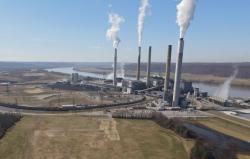
OR WAIT null SECS
© 2024 MJH Life Sciences™ and Turbomachinery Magazine. All rights reserved.
Kawasaki refines its DLE combustor for M7A-03 turbine
Kawasaki Heavy Industries (KHI) introduced its first industrial gas turbine in 1974 for stand-by use sets, followed by a baseload gas turbine in 1984. Since then, the company has delivered more than 10,000 GTs in the 0.2 to 18 MW range. In keeping with regulatory requirements, KHI released a Dry Low Emissions (DLE) combustion system in 2009 which guaranteed <15 ppm NOx (O² = 15%) for the 8 MW Kawasaki M7A-03 and the 18 MW Kawasaki L20A. Most recently, the company developed a single-digit NOx Dry Low Emissions (DLE) combustor for the M7A-03 turbine. It achieves <9 ppm NOx and <25ppm CO emissions.
(M7A-03 gas turbine)
Improvements on combustor
The pilot fuel burner of the 15ppm NOx DLE combustor is a diffusion type and has six injection holes at the center and tip corner of the burner. A fuel-rich zone exists at the exit plane of the pilot fuel burner. This area is effective in flame stabilization, but has a negative effect on the reduction of NOx emissions.
For the new combustor, a premixing pilot burner was applied for the first time. The fuel-air concentration was investigated using Computational Fluid Dynamics (CFD). The emissions, ignition and flame stability were evaluated using rig and engine tests.
The premixed pilot fuel burner of the single-digit NOx DLE combustor has a series of air slits and fuel injection holes between the slits. The fuel is perpendicularly injected into the air-flow direction and the shearing force of the air enhances the mixing effect between the air and fuel. After that, the mixed gas is deflected by 90 degrees. The blending between the air and fuel finally completes through the longer mixing pass and is injected from the injection holes at the nozzle tip.
(More in May/June issue of Turbomachinery International magazine)


